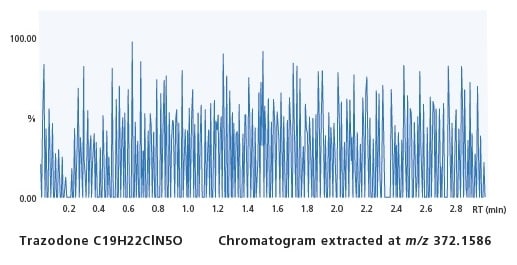
Checking for Peaks
The chromatogram extracted for the target is depicted by entering the composition formula or the applicable ion m/z into the compound table.
Kit for Direct Probe Ionization Mass Spectrometer

Note: Analytical precision can be improved even for solid samples by performing simple pretreatment such as dilution and centrifugation.
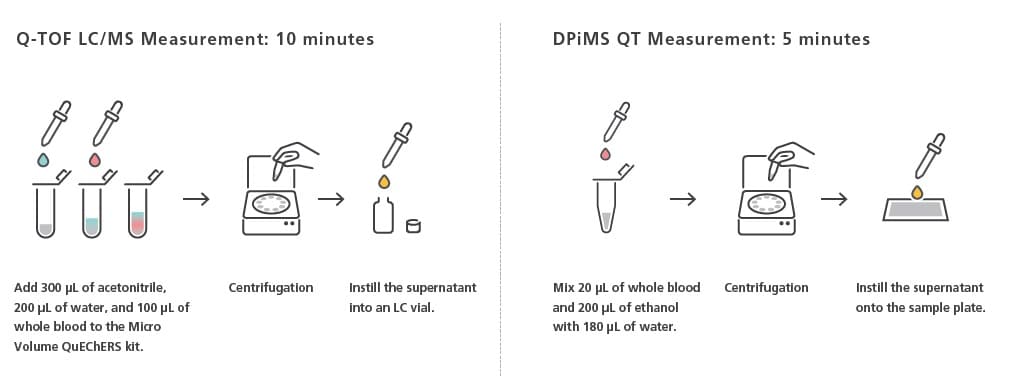
Quick and Easy Detection of Isoflavones in Processed Soy Bean Foods
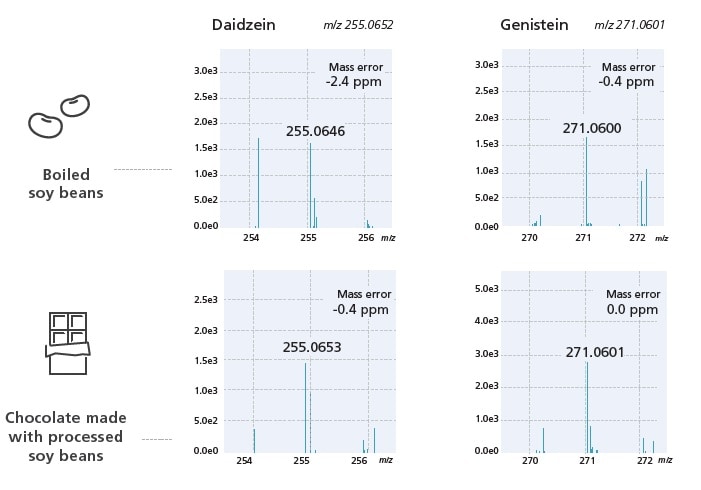
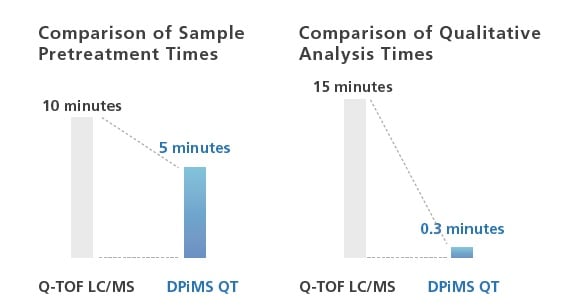
The qualitative analysis sequences for DPiMS QT and Q-TOF LC/MS were compared. Using DPiMS QT, it was possible to significantly reduce the measurement time in comparison to conventional methods using Q-TOF LC/MS.
Only a few dozen seconds are spent on DPiMS QT qualitative analysis. When performing qualitative screening analyses, the time before results are checked can be reduced, improving procedural efficiency.

Only a few dozen pL of the sample adheres to the probe after each sampling. There is no worry of contamination inside the mass spectrometer. Carryover can even be prevented by changing probes. Concentrated samples and samples of unknown concentration can be measured.

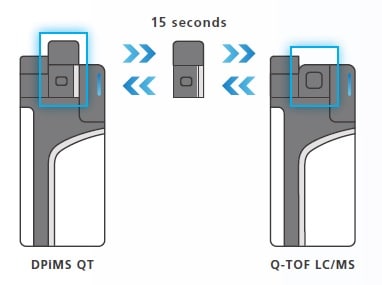
Only about 15 seconds are required to remove the DPiMS QT unit, reconfiguring the system for Q-TOF LC/MS. The resources (solvents and columns) required for Q-TOF LC/MS analysis can be reduced by implementing qualitative analysis and primary screening via DPiMS QT, thereby reducing the number of samples requiring quantitative analysis.
PESI MS Solution software is used to control the probe, edit MS method files, and start measurements. Detailed MS analytical conditions are configured from the LabSolutions™ LCMS method editing window. Analysis can be started easily by selecting the probe control mode and MS method in PESI MS Solution. During analysis, the status can be confirmed in the LabSolutions LCMS window.
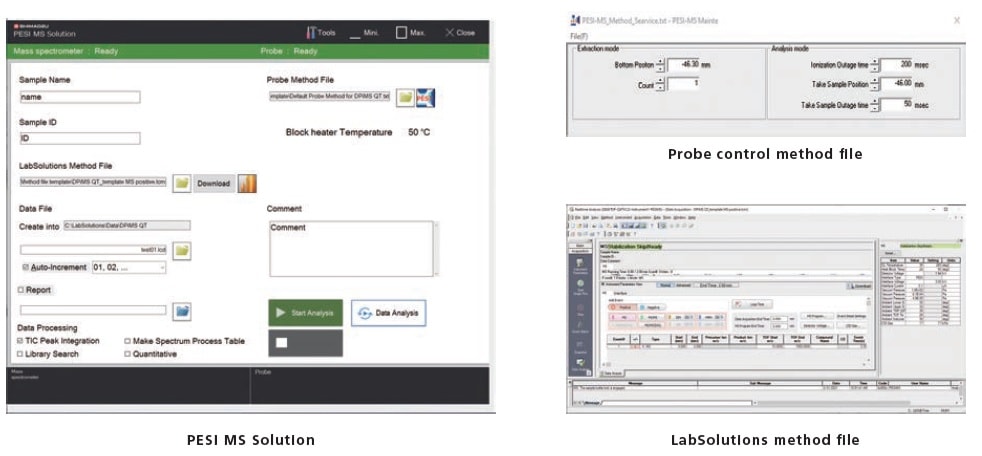
A qualitative analysis was performed on a whole blood sample mixed with trazodone (500 ng/mL). A cycle of MS and MS/MS measurements was performed simultaneously. LabSolutions Insight Explore was used for the data analysis. LabSolutions Insight Explore enables composition estimation, library searches, and structural analysis.

Checking for Peaks
The chromatogram extracted for the target is depicted by entering the composition formula or the applicable ion m/z into the compound table.
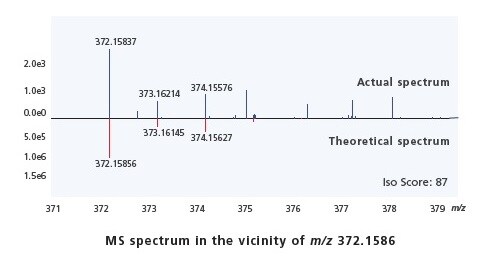
Composition Estimation
From the measured spectrum, select a spectrum of any m/z and use the composition estimation function to list estimated composition formulas in order by score.
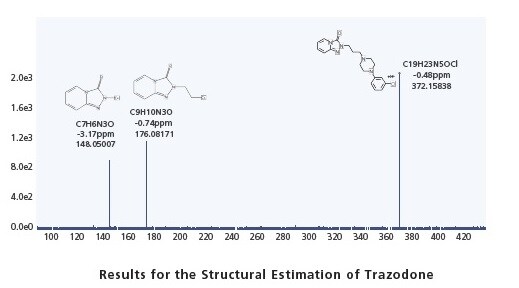
Assigning Fragments
Using the structural analysis assign function in LabSolutions Insight Explore, fragments are assigned with respect to the product ion spectrum.
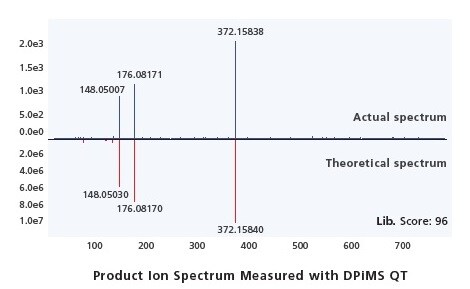
Scoring via the Spectral Library
Scoring is performed with respect to the spectrum measured with DPiMS QT by creating a spectral library using Q-TOF LC/MS.